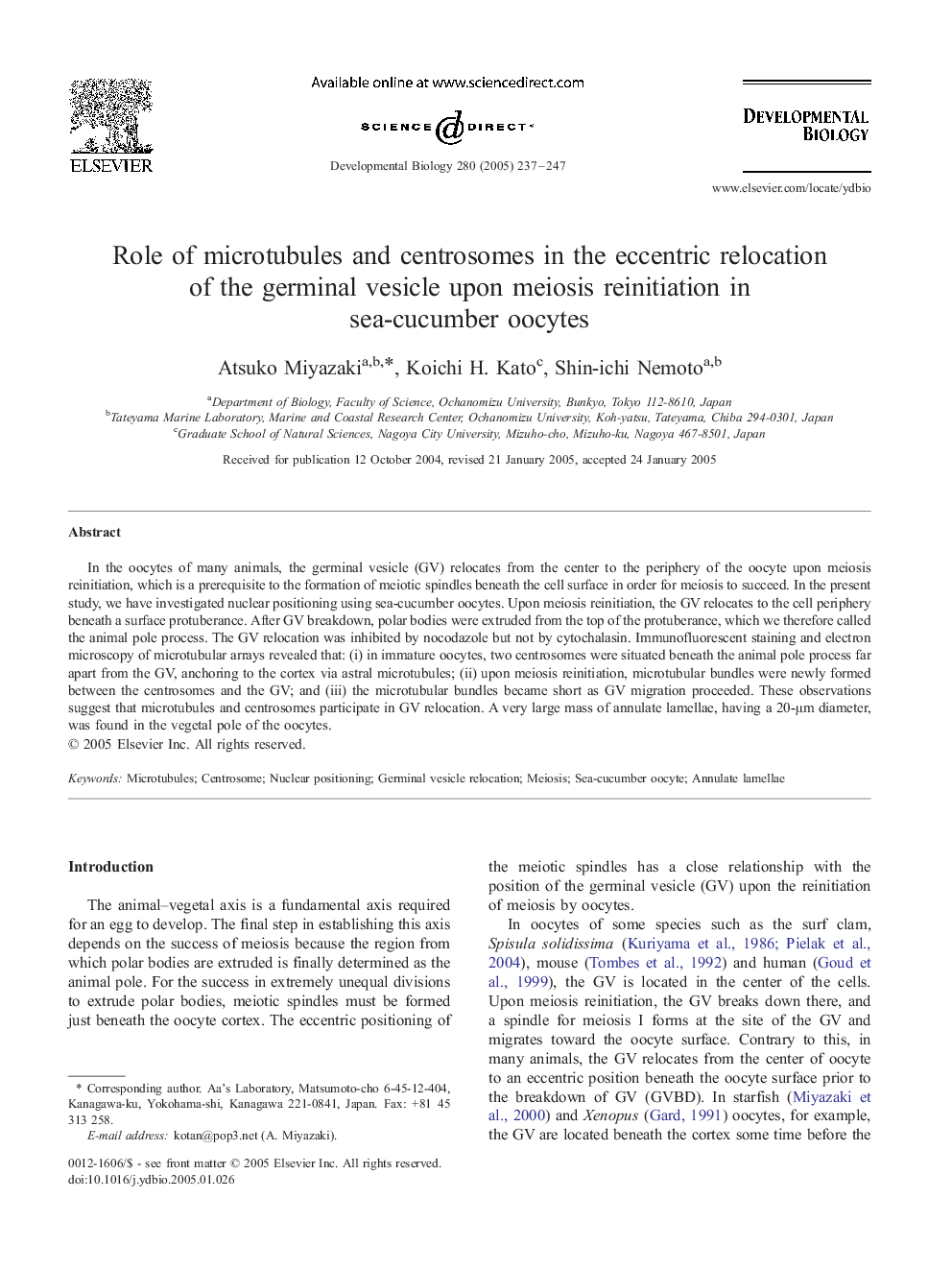| Article ID | Journal | Published Year | Pages | File Type |
|---|---|---|---|---|
| 10934289 | Developmental Biology | 2005 | 11 Pages |
Abstract
In the oocytes of many animals, the germinal vesicle (GV) relocates from the center to the periphery of the oocyte upon meiosis reinitiation, which is a prerequisite to the formation of meiotic spindles beneath the cell surface in order for meiosis to succeed. In the present study, we have investigated nuclear positioning using sea-cucumber oocytes. Upon meiosis reinitiation, the GV relocates to the cell periphery beneath a surface protuberance. After GV breakdown, polar bodies were extruded from the top of the protuberance, which we therefore called the animal pole process. The GV relocation was inhibited by nocodazole but not by cytochalasin. Immunofluorescent staining and electron microscopy of microtubular arrays revealed that: (i) in immature oocytes, two centrosomes were situated beneath the animal pole process far apart from the GV, anchoring to the cortex via astral microtubules; (ii) upon meiosis reinitiation, microtubular bundles were newly formed between the centrosomes and the GV; and (iii) the microtubular bundles became short as GV migration proceeded. These observations suggest that microtubules and centrosomes participate in GV relocation. A very large mass of annulate lamellae, having a 20-μm diameter, was found in the vegetal pole of the oocytes.
Related Topics
Life Sciences
Biochemistry, Genetics and Molecular Biology
Cell Biology
Authors
Atsuko Miyazaki, Koichi H. Kato, Shin-ichi Nemoto,
